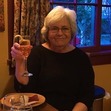The Adventures of Robin Hood
Robin stole from the rich, despised the greedy plutocrats, and in acts of social justice, gave to the poor, the hungry. As a child in Southern California, I knew nothing of class struggle, but I was all on the side of Robin and his Merry Men.
In the early 1950’s my parents bought their first house. They financed it with the GI Bill, and the mortgage was $55 a month. Our neighborhood was but one of many tracts that sprang up all over post war San Fernando Valley: six long blocks parallel to one another, lined with homes, two styles and three colors to choose from (green stucco, gray stucco, or a sickly peach stucco). Before each house, on the strip of dirt between the street and the sidewalk (referred to as the parkway) little elms were staked. No lawns or gardens, nothing but dirt when we moved in. The tract was bracketed at one end by an alfalfa field, and at the other by a defunct pear orchard and the remains of a chicken ranch. Within a few years all that was gone too, and there were more tract houses. I have no recollection whatever of the bulldozers, the dust and racket all that construction must surely have raised. I remember only lovely, hot summers, reading and playing imaginary games in the backyard, roller skating, riding bikes and watching television.
 Helen, 1953
Helen, 1953We had a television before
1952 when my sister, Helen, was born. A
squat box, it sat on four stumpy legs, and for a time had little rabbit ears antenna. Three networks
and three local LA stations played across the screen. Up and down Beckford
Avenue on summer nights, laugh tracks in unison spilled from the open doors,
and families sat rapt, their faces bathed in flickering gray light.
 Bill Johnson & kids, 1953
Bill Johnson & kids, 1953My postwar generation was the
first to have television influence much of our lives. The radio might play in
the kitchen while you were doing something else, but people sat down purposely
to watch television. Television gave shape to our childhood days, from
preschool Sheriff John and the Lunch Brigade, to afternoon kiddie
cartoon shows with Popeye and Betty Boop
and Felix the Cat from the 1920’s and ‘30’s (thus, unknowingly, introducing us
to our parents’ cultural diet ) the puppet shows, Beanie and Cecil, and Thunderbolt
the Wonder Colt. A little later came the Mickey Mouse Club and American Bandstand (where, shock!
there were black teens as well as white!!)
 The Adventures of Robin Hood
The Adventures of Robin HoodBut among these kiddie shows,
my favorite by far was The Adventures
of Robin Hood. Made, financed, and
distributed by the British, the series ran for four seasons and the cast
included names that would become stellar in British film and theatre. Interiors
were filmed at Nettlefold Studios, exteriors at Foxwarren Park, an estate in
Surrey owned by the producer, Hannah Weinstein.
However, Hannah was an
American who had fled New York during the McCarthy era. She chose her writers
from a great pool of exiled American talent. Writers who had once commanded
glamourous salaries and lounged by Hollywood pools, had fled to England when
faced with the prospects of prison, or
being unable to work at all. Some of
these writers like Adrian Scott (Crossfire, 1943 and Mr. Lucky,
1940, one of the original Hollywood Ten)
had already served time in prison before coming England. These left-wing
writers must have had a great time (if not great pay) writing The Adventures of Robin Hood. After all, Sir Robin is born to the manor, but
prefers the forest and the company of comrades.
Robin stole from the rich,
despised the greedy plutocrats, and in acts of social justice, gave to
the poor, the hungry. As a child in Southern California, I knew nothing class
struggle, but I was all on the side of Robin and his Merry Men.
In the
1991 film Guilty by Suspicion, Robert deNiro plays a blacklisted
director, a man once powerful, who flees to England when he is branded as a
Commie in the 1950’s. He ends up working on an unnamed kiddie TV program set in
the middle ages and filmed at a castle.
Far from the castles of England, I reveled in this series. I never missed an episode. For my birthday my parents got me a toy bow-and-arrow set (arrows with suction cups on the end) and a target they pinned to the backyard fence my dad built. I would practice archery, usually wearing green. But I had no idea that dialogue on the lips of Robin, Marian, Friar Tuck, Little John and others came from the pens of Adrian Scott, Waldo Salt (later, Midnight Cowboy, 1969 and Coming Home, Serpico) Ring Lardner Jr. (Woman of the Year, and later M*A*S*H* 1970) Howard Koch (Letter to an Unknown Woman, 1948 and contributed to Casablanca). Their lines appeared, but their names did not. Had these names been in the credits, The Adventures of Robin Hood would have never got US distribution. They used pseudonyms, or on some episodes, they just left off the writers’ credit altogether.
The Adventures of Robin
Hood is my only connection to writers
whose stories I used in creating The Great Pretenders, but the series
lives on my memory as stirring television. The theme song too remains
indelible:
“Robin Hood, Robin Hood, Riding through the glen
Robin Hood, Robin Hood, With his band of men
Feared by the bad, Loved by the good
Robin Hood, Robin Hood, Robin Hood
He called the greatest archers to a tavern on the green
They vowed to help the people of the king
They handled all the trouble on the English country scene
And still found plenty of time to sing”
I, personally, can still sing
this theme song. I won’t, but I can.



